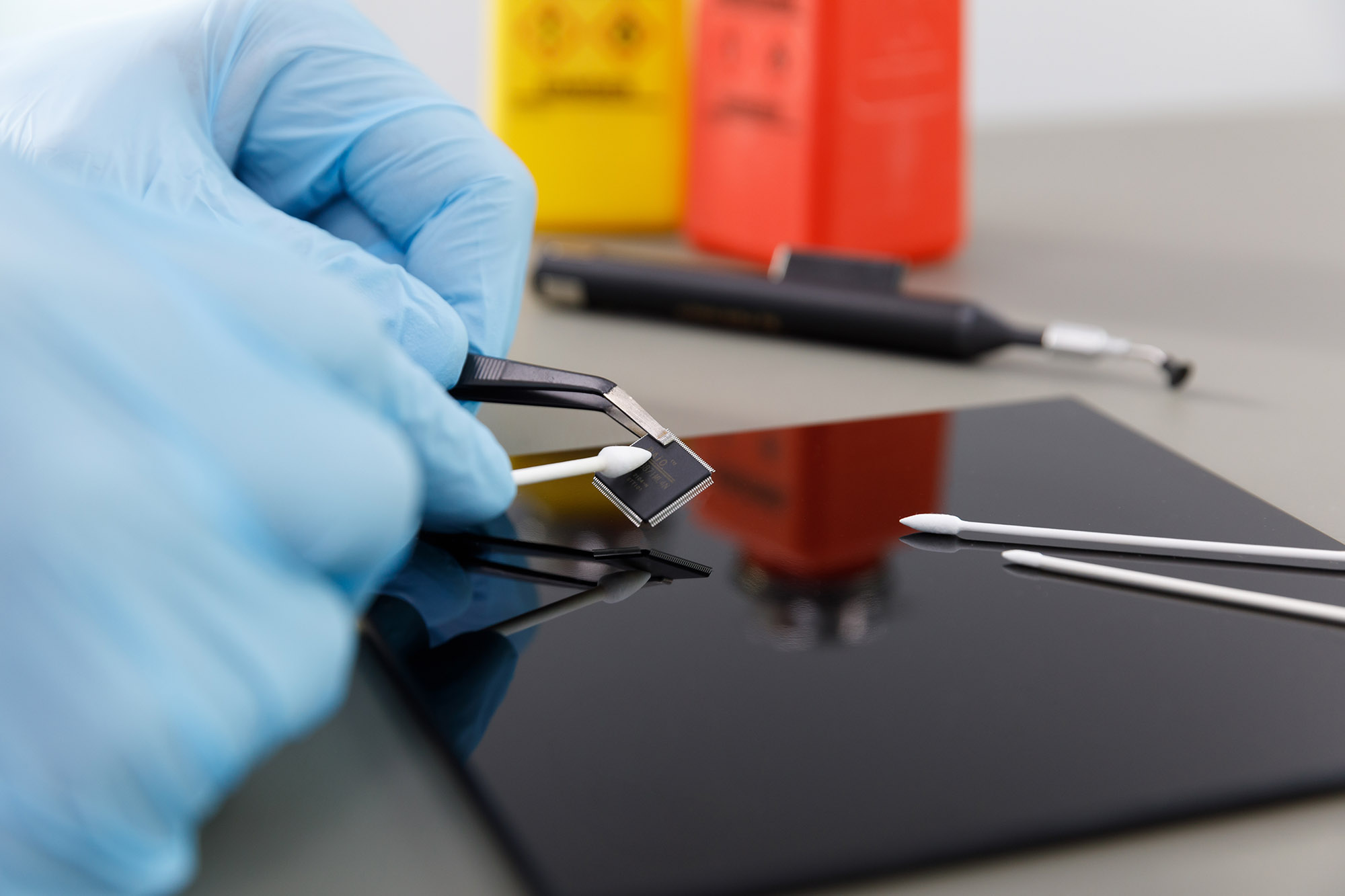SafeLab GmbH Electronic Component Testing is a testing facility for electronic and electromechanical components. The company focuses on checking components for authenticity and unused state. At the core of the service is a proprietary test report that clearly indicates the result of the analysis – PASS or FAIL – already on the front page. This involves the engineers expertly interpreting the test results and providing the customer with a clear recommendation as to the usability of the tested components.
Interview with Anna Maisch, CEO of SafeLab GmbH Electronic Component Testing.
Easy Engineering: What are the main areas of activity of the company?
Anna Maisch: SafeLab sees itself as a service provider in an advisory role. We thus pursue a holistic approach with professional procurement. Our goal is to implement efficient and cost-effective solutions for our customers, enabling them to reap the benefits of open distribution without compromising on quality. The offer is intended for purchasing departments and quality assurance departments of resellers as well as EMS service providers and OEMs. The focus: eliminating counterfeits from the supply chain.
Analyzing failures and identifying the causes of defective components and assemblies is also part of our testing service.
E.E: What are the ranges of products?
A.M: We offer all common tests, including: Visual inspection, surface analysis, decapsulation, X-ray inspection, material analysis, electrical testing/function test, solderability test, and metallographic examination. Customized solutions for specific customer requests are, of course, also available.

The components tested include a wide range of active and passive component groups, such as integrated circuits/ICs (microcontrollers, microprocessors, memory), diodes (Zener diodes, diac, thyristors), capacitors (capacitors, MLCC, electrolytic capacitors), resistors (potentiometers, NTC, varistors), transistors (MOSFET, IGBT, triac), inductors (coils, transformers, chokes), switching elements (relays, contactors, switches), and power supply components (batteries, rechargeable batteries, power supplies).
The analysis methods are selected and carried out in accordance with the IDEA-STD-1010 standard based on the AS standards AS6171/AS6081.
E.E: What is the state of the market where you are currently active?
A.M: At some German test centers, waiting times of up to ten weeks have been reported. Yet waiting is not an option when it comes to allocation. This is why many German customers have switched to Asian, specifically Chinese, service providers. However, the standards used here are completely different. Due to negative experiences, test centers in the Far East are no longer an option for many companies. That’s why we want to further position ourselves in the market and expand our offering.
E.E: What can you tell us about market trends?
A.M: More and more customers rely on reliable component tests to obtain meaningful results in their daily business operations. In fact, a massive wave of counterfeiting, especially from Red China, is responsible for this trend. It is considered a stronghold for product and brand counterfeiters. EU market surveillance authorities estimate the damage caused to the national economy in Germany alone by product and brand piracy at more than 50 billion euros per year across all sectors. Moreover, they classify 97% of the counterfeits recorded as “goods with serious risks”.

E.E: What are the most innovative products marketed?
A.M: Our analysis report is unique as it clearly shows the final verdict already on the front page – PASS or FAIL. Our customers receive what they need: A clear recommendation for action from our experts, without having to first evaluate or interpret lengthy documents themselves. At the same time, the test report contains all the analyses carried out with the respective parameters, visual documents and the individual results.
E.E: What estimations do you have for the beginning of 2024?
A.M: The demand for verifying originality results strongly from the need to procure components on the open market. At the same time, the number of counterfeit products in circulation is very high. Experts estimate that up to four percent of all semiconductors traded are in fact counterfeit. This means that 6 percent to 12 percent of electrical appliances traded worldwide could contain counterfeit electronic components. There is still a lack of awareness for this widespread problem. Too often, it is simply accepted because the components initially function in the application, and failures occur only during operation with the consumers. Depending on the product and the application, this can lead to serious consequences. In any case, it is negative for the brand’s reputation.


